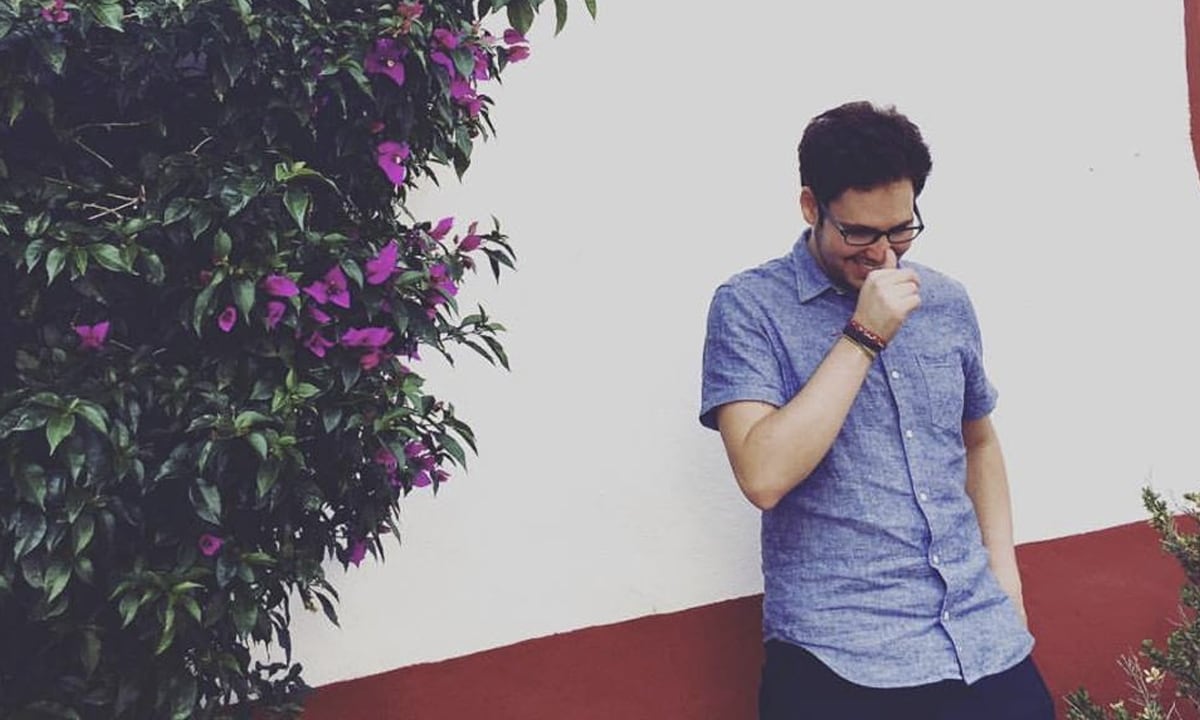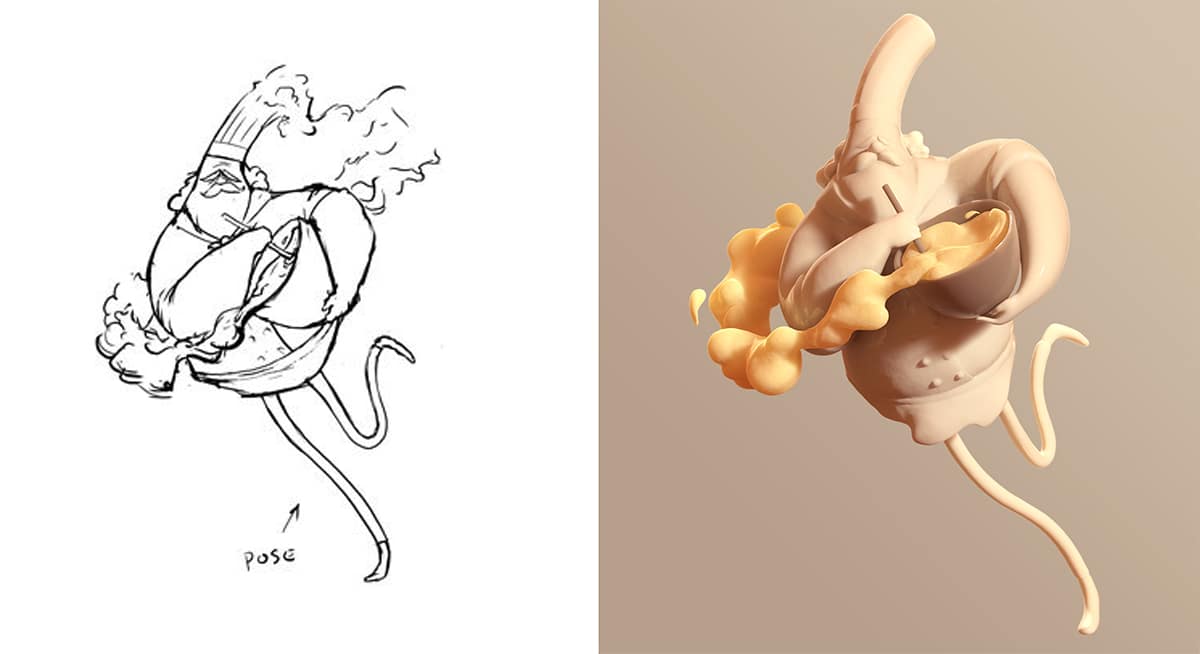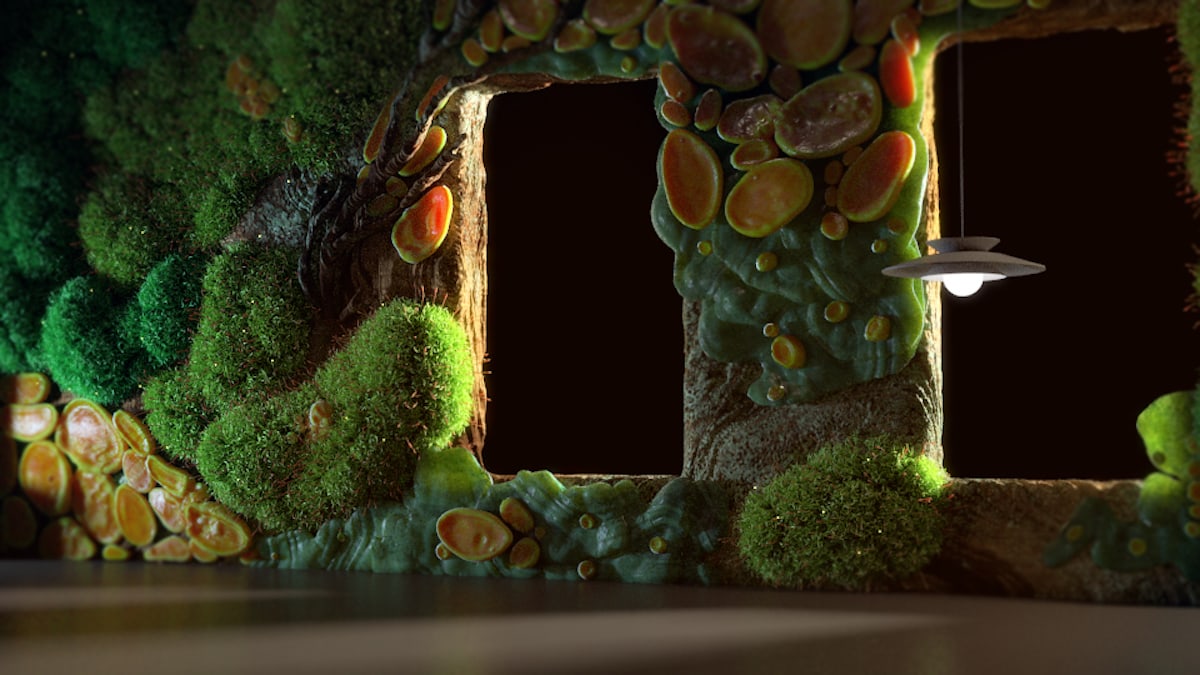
There are a lot of moving pieces that go into any production. More often than not, the main names people take notice of in the credits are those at the top: Director, CD, AD, etc.
Sadly, this means that many influential people have a tendency of going under the radar. Whether you know it or not, you’ve seen and appreciated the work of Alex Dingfelder. Alex is the CG lead and look development artist at Buck LA and has played an integral role in many of the company’s most successful pieces.
Thankfully, Alex has agreed to take us through his process and provide some insight into what exactly look development is and just how important it can be. Additionally, Alex has graciously agreed to answer some of your questions in the comments, so feel free to fire away!
Q&A with Alex Dingfelder
First, for the uninitiated, what exactly is look development?
Look development is kind of nebulous and hard to pin down. It’s one of those catch all terms used to encompass a wide variety of skillsets, and it’s definition will vary widely between studios.
To me, look development is both, the process of finding and solidifying the artistic look of a spot when translating from rough concept (be it design or written copy) to CG, and the technical implementation needed to achieve this look.
It most commonly involves texturing, shading, fur systems and detail-sculpting. Depending on the project, lighting and compositing could become part of the process as well, particularly during heavily stylized projects.
At bigger studios, with more segmented teams it’ll usually stop at shading and texturing, and it’s sometimes also called surfacing.
Look development is very much a design-driven exploratory process, and is one of the most important factors when deciding how a piece will end up looking and feeling in the end.

In many ways, it seems as though you’re both a designer and a CG artist. How do you identify and how has this shaped your process?
This is an interesting question, as I feel like my identity and role has changed a lot over the course of my career.
All through college and shortly after graduation I definitely considered myself as more of a CG artist. All the content and inspiration I used to consume, as well as the artists whose work I followed and studied the most, were firmly inside of the CG circle.
After starting out at BUCK, however, I got introduced to great designers, and even though I’ve always had an appreciation for good design, it had always been in the background when compared to CG. Bringing it to the spotlight really made me realize how narrow my tastes used to be. I’m sure everyone in the motion graphics community can remember at least one moment in their career when their horizons suddenly widened… well, this was one of the most important ones for me and, as these things go, you inevitably start getting infected in a way, and as your tastes and inspirations change, you start paying attention to different things, you start judging your own work differently.
Nowadays I consider myself as more of a designer with CG being my medium of choice. However, I feel like as long as the CG artist/Designer division still exists, I’ll be a little lost between the gap.

There’s a fascinating shift away from all photoreal, all the time. We’re in a bit of a renaissance of stylization. What are your thoughts on this shift and how do you stay nimble enough to achieve such a wide variety of styles?
I totally agree, and it is a fascinating shift.
I think that there are a lot of things that CG animation can offer as a medium, and the possibility of achieving photoreal results is just one of them.
In CG you also get a lot of stuff for “free”: perspective, shape and lighting consistency between frames, rig modularity, after-the-fact camera tweaking, etc… also, depending on the nature of the project, CG can even be more resilient to animation changes than other mediums due to its heavy focus on non-destructive workflows.
These are not trivial advantages, and you don’t have to care about all of them at the same time for CG to make sense in a project. As more people start to realize this, and as these tools start to become more and more accessible to new-users, the more exploration and experimentation that we start to see in the medium.
Suddenly, photorealism is not the only reason to do CG anymore, but you can still take advantage of the rules by which most render engines play (which try to mimic real-life), and you can start to break some while keeping others, achieving looks that would be too hard to produce in motion with a different medium.
On staying nimble, I would say that it pays to constantly test your own assumptions: “Is this really the best way to do this? Do I really have to do X to produce Y? How can I simplify?”

You’re kind of the “fixer”. You’ll receive a style frame or some sketches and have to make it possible. Can you tell us a bit about how you stay true to the integrity of the original designs?
This heavily depends on the project, the timeline and the director’s goals but, in general, I like to pick a character, frame or shot that will help me sell the look of the entire project to the directors and then work on that.

When defining the look of something, I like to work big to small, asking myself what is important about the image every step of the way. Where does it make sense to push the realism? Where does it make sense to stylize? Will this approach compromise the original idea behind the design? You can simplify the model’s shapes and push for a more realistic texture or vice-versa. You can even caricature one aspect of the texture/material while keeping some other aspects more realistic or completely mute one element of a surface to let its other properties shine.
Specifically on the topic of look development, once you identify what the core idea you are trying to communicate is, you can make very broad decisions about surfaces. For example, sometimes an element just needs to look like, say, wood. But other times, the only important thing is that it looks like a hard surface, or that it looks hand-crafted, or damaged, or fragile… keeping these things in mind really lets you focus your energy where it’s important, as it’s sometimes too easy to get lost in the trap of just adding realism for the sake of realism without really benefitting the image as a whole.
More generally on the topic of translating a sketch or styleframe into CG, if you are not the original designer, it’s good to keep in mind what you yourself bring to the table. A big part of the job is to enhance the end-result at every step of the way. I notice that a lot of people, particularly junior artists, tend to become slaves to the concept in a way. You can’t become uncompromising about every aspect of the original design as not everything translates into CG in the same way. There is a lot of creative problem solving and design decisions you have to make in order to successfully make something work in 3D while still making it feel the same (as opposed to making it look the same) as the original concept.
It helps to develop some confidence in your own voice in order to find a way to make something work for the project without being at odds with the director’s vision.
“Seed Matters” comes to mind as an excellent example of stylization that’s informed by reality. Can you take us through some of your work on that project?
“Seed Matters” is a good project to talk about this process because the ideas behind the world’s materiality were very clear from the very beginning: Everything had to look handcrafted.
This laser-focus on a single idea gave us a lot of clarity during the look development process of the short. One of the most important aspects was to develop a language we’d use everywhere to convey the feeling that every single object was made by hand.
Besides working on Mr. Seed from very early on, I decided to also model, light and lookdev one of the most flashy shots to sell the look of the short, the living wall.

A decision I made early on was to approach the material creation in a very reduced way. Everything was being crafted in the same workshop and this workshop only had a couple of materials to work with. I created a procedural material library that would be used to source the beginning of every new material used in the short. This made it so that all the decisions that were made during the creation of this library would be effortlessly echoed throughout all the elements in the spot, such as adding very visible tool marks and brushstrokes on all the paints, plasters, and clay.

This was incredibly helpful because when you have multiple assets being worked on by different people, you usually end up with everything feeling like it exists in it’s own island, but this approach helped to make assets feel inside of the same context right from the start. It was less important if something was made of wood, or plastic that was meant to look like wood, or if it was just some foam that had a heavy coat of brown paint. The process became less about creating specific materials in a void and more about showing the craftsman’s hand behind everything.
On the other end of the spectrum, diving fully into the world of realism, you’ve done a lot of CG food. That can be quite a tough process! Can you tell us about the struggles involved in faking realism with something that’s so deeply ingrained in our minds?
Definitely! Food is one of those things that’s incredibly tricky to predict, because arriving somewhere that looks appealing can sometimes not be good enough.
Depending on the project, food might just need to resemble food, but sometimes it needs to look delicious, and this is a big difference. This sounds silly, I know, but working on a project where food is the main product and has to look appetizing is much, much harder than working on a project where food is just used as a “prop”.
Candies are usually straightforward enough, the real challenge usually happens when working on things that have been very visibly cooked, like bread, meat or fried stuff.

Obviously, in the dream scenario, you can get incredibly high resolution pictures of well-groomed food under neutral lighting to extract textures from, but depending on the complexity of the food and how close you’ll see it, photo-textures might not be good enough (you might need surface scans), as the displacement, color and specular layers vary greatly amongst each other. This is because most food is usually a very visible and “naked” mix of a lot of different elements.
Assuming you are not working under such privileged circumstances, as I imagine most people aren’t, what I’ve found to be useful when creating CG food is to work procedurally for as long as possible. You are better off observing the important patterns and building your own base textures from scratch with procedural noises than trying to scour the internet for useful images to extract photo-textures from.
These are some quick tips I’ve found super useful when working on food:
- Micro-detail is super important, more so than on almost any other kind of surface I’ve worked on.
- Having a combination of soft and hard edged low frequency displacement maps running across the material is great to break-up the surface and make something look “crunchy”.
- If working procedurally, masking one noise with another noise is a great way to quickly get rid of the “procedural look”.
- When working on color, create multiple, slightly different, layers of your main texture, each one making the previous one fade slightly. This might feel like are repeating a similar texture over and over, but it creates an effect of depth within the material that you can only achieve through its color.
- Concentrate on the aspects of the food that make it feel delicious and interesting, ignore everything that adds realism just for it’s own sake. Most food photographers would groom or photoshop those details out anyway.
- Work on the material a bit (or a lot!) longer than you usually would. Most CG artists are familiar with the infamous “Valley of Suck” when working on something. Well, this one lasts longer than usual. Food is hard.
If you had to choose, what’s your favorite part of production?
Oh man, it’s pretty hard to pick a single part!
I think that there is quite a unique excitement that exists during the initial exploration of how a spot will look. That initial thrill of discovery that happens while working on the materiality and lighting of the first shot is hard to beat.
Not to say that everything after this step becomes boring, but your focus does tend to change a bit more towards applying this initial style to the rest of the project and keeping everything consistent.
Finally, what’s next for you and your work? Anything you’re itching to try out in 2017?
I’m pretty excited about getting more into real-time renderers in the context of videogames and interactive experiences. This is definitely an area of look development and lighting that I haven’t explored much so far and it comes with it’s own exciting set of challenges.
Hopefully 2017 will be the year I finally start diving deeper into this medium!






